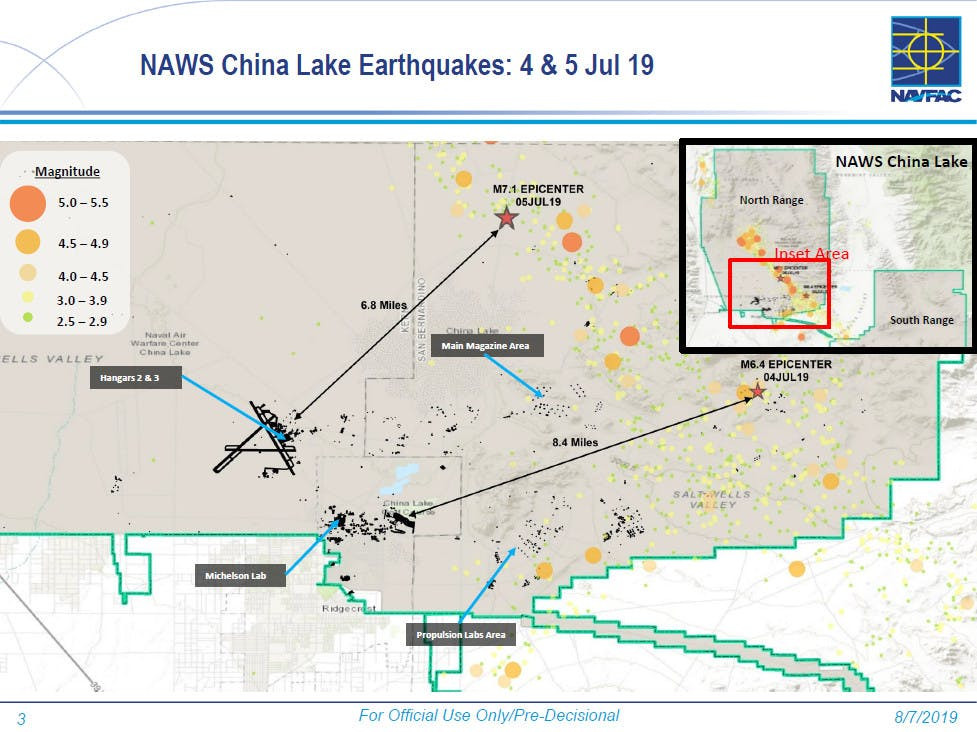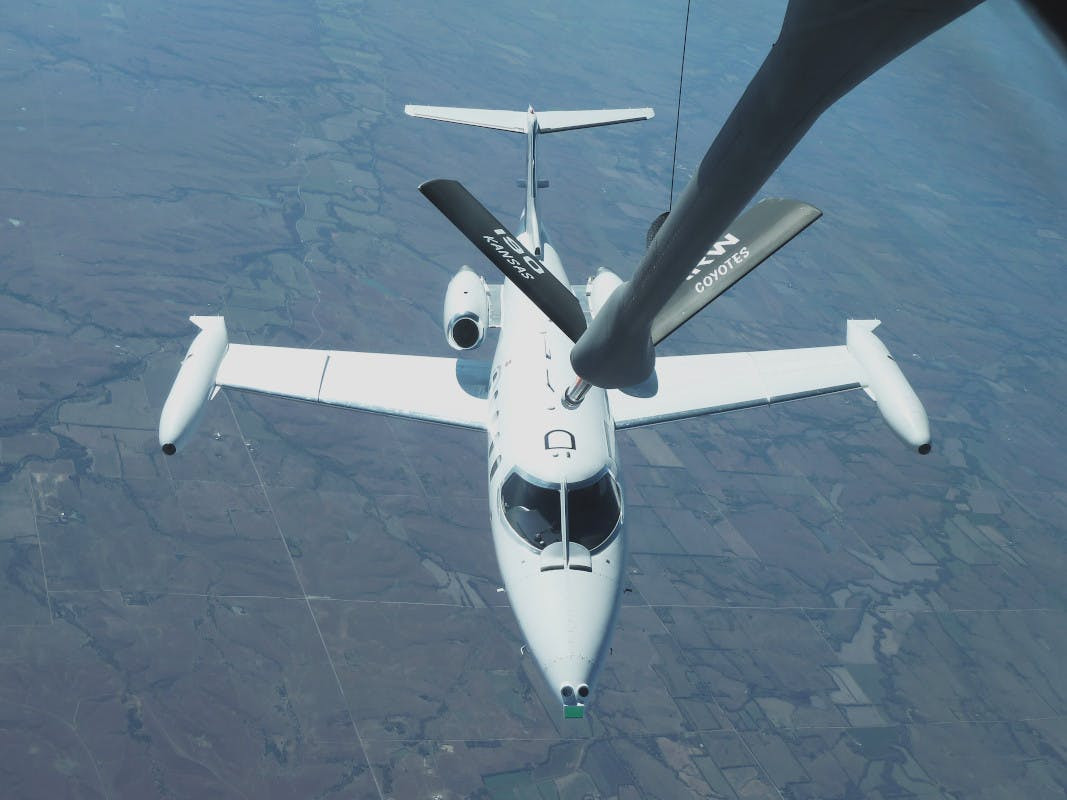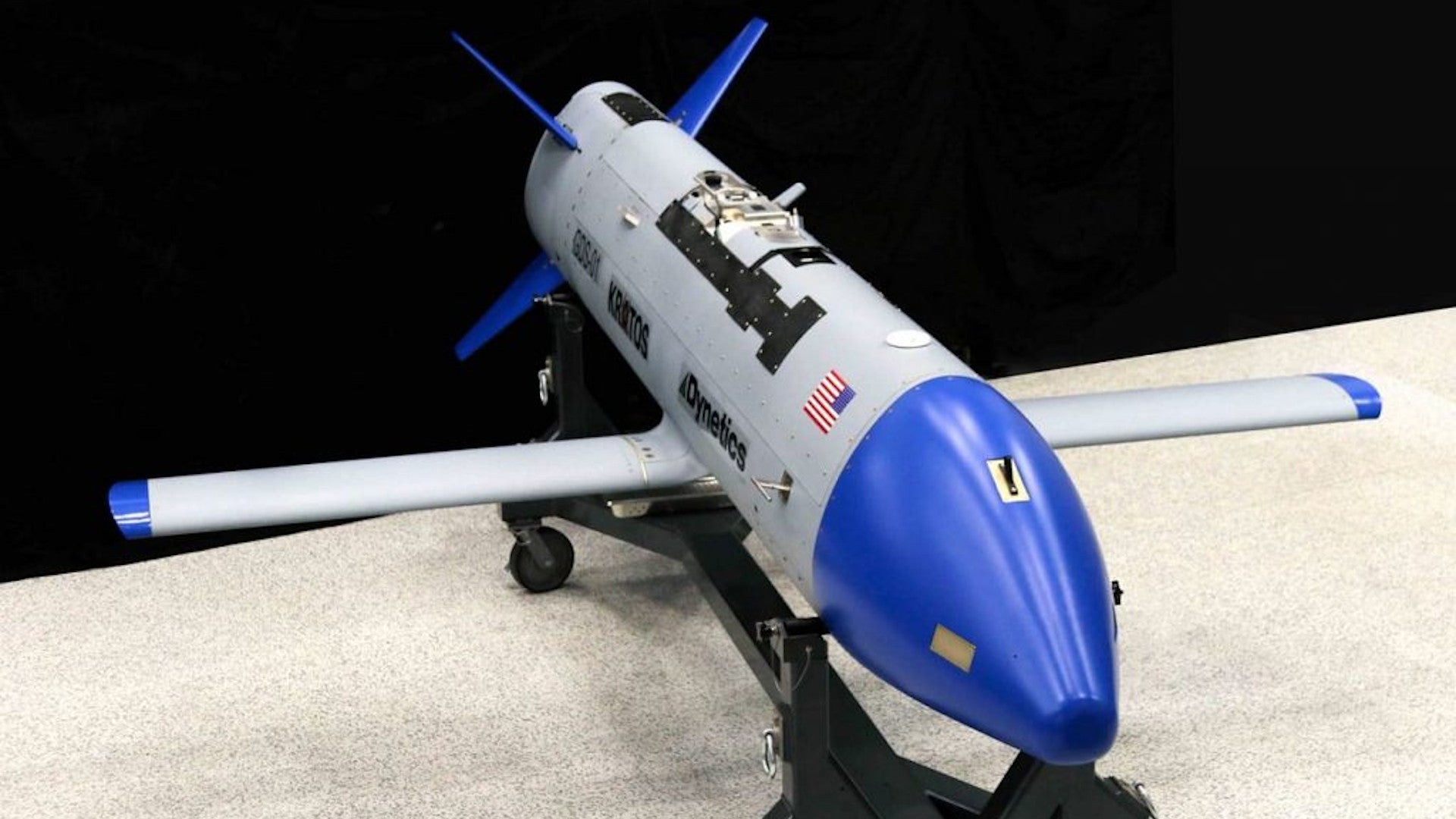Defense contractor Dynetics has offered new details about its flight test plans for the first prototypes of its X-61A Gremlins reusable, air-launched and recovered drones. Unfortunately, the program, which aims to eventually demonstrate the ability of these unmanned aircraft to operate as a low-cost drone swarm, is facing delays after earthquakes left the U.S. Navy’s sprawling China Lake test base in California severely damaged earlier this year. Multiple testing phases may now have to move to the U.S. Army’s Dugway Proving Ground in Utah.
Tim Keeter, Dynetic’s Gremlins program manager, explained the situation in a recent interview with Air Force Magazine. The Alabama-headquartered firm had first revealed to FlightGlobal that it had delayed the first phase of the X-61A’s flight tests in September 2019 due to the devastation at Naval Air Weapons Station China Lake. The War Zone
was first to report that the Navy might need as much as $5 billion to make the base, which houses some of the Navy’s premier research and development facilities for aircraft and weapons, “mission capable” again following a series of earthquakes in July.
“It’s limited range access. They’ve got a lot of damage that’s been done,” Keeter told Air Force Magazine. “They’ve got a lot of things to take care of in terms of infrastructure before they can support a flight test … like this.”
In September, FlightGlobal had reported that the loss of a piece of ground control equipment called the flight termination system, which is employed when there is a need immediately abort a flight test for safety or other reasons, was a particularly critical issue. The earthquakes left approximately 20 percent of China Lakes structures either dangerous to occupy at all or with severe restrictions on their use. A more detailed look at the extent of the damage can be found in this past War Zone story.

Fast-growing drone maker Kratos is actually building the Gremlins drones, which the Air Force designated as X-61As in August 2019, and has completed five so far for Dynetics. The Defense Advanced Research Projects Agency (DARPA) has been running the Gremlins program since 2015 and selected the Dynetics-led team to proceed to the final demonstration phase of the program in 2018.
Dynetics’ concept involves air launching the Gremlins from a carrier aircraft and then recovering them in midair. The drones each have a docking device, which folds flush with the fuselage when not in use, that then locks into a shuttle towed behind the recovering aircraft. That plane then reels in the unmanned aircraft.
DARPA envisions the Gremlins acting as a semi-autonomous or autonomous swarm and conducting various missions, such as intelligence, surveillance, and reconnaissance or launching electronic attacks on hostile air defenses. Dynetics has noted in the past that swarms of X-61As could also perform a multitude of other missions, including kinetic strikes. You can read more about the program and its objectives in this past War Zone piece. You can also see how all of this is all supposed to work, in principle, in the video below.

Dynetics has conducted some general testing of the recovery system already, but has yet to conduct an actual first flight with one of the X-61As. It had planned to do so last month at China Lake using a specially configured C-130 Hercules transport aircraft from International Air Response. This is one of the tests that may now occur at Dugway to try to avoid significant additional delays.
Under the current plan, International Air Response’s C-130 will launch the Gremlin from a pylon under the wing and personnel onboard will control it. Dynetics says its current control system can direct up to eight X-61As simultaneously. After the flight, “we’ll deploy our parachute and our airbags to have a … gentle ground recovery, hopefully,” Dynetics’ Keeter told Air Force Magazine. This is a very well established method for recovering unmanned aircraft that has been in use since the 1970s.

A second phase of flight testing would involve a Learjet from Calspan, another contractor, acting as a surrogate for the X-61A and attempting to link up with the docking mechanism trailing behind the C-130. This will allow Dynetics to evaluate the Gremlins avionics and flight software. Calspan has used its Learjets in the past to demonstrate the technology necessary for an unmanned aircraft to conduct a mid-air refueling with a manned tanker using a boom system.

“That will allow us to further check our recovery system, docking system avionics, and our safety features associated with that, because that’s a high-risk part of the operation, is getting close to that manned aircraft,” Keeter said. “We want to do that in February [2020].”
By that point, Dynetics hopes that China Lake may be able to accommodate this particular round of tests. Keeter told Air Force Magazine that this phase may need less extensive infrastructure as it involves two manned aircraft.
The last phase of the flight test demonstration program, which Dynetics hopes will take place no later than next summer, may still be too much for the Navy facilities to handle, unfortunately. Under the contract with DARPA, the company will have to demonstrate its system recovering four X-61As within 30 minutes.
Dugway may ultimately host these tests, as well. There are still questions about how quickly Dynetics would be able to relocate any necessary test assets and associated equipment to this Army facility. There could be additional scheduling complications, as well, at the proving ground or with the other contractors involved.
All of these factors could still potentially lead to additional delays, but Dynetics remains upbeat and is already looking ahead to a potential demonstration of an actual mock Gremlins mission of some kind. The company is exploring the possibility of full autonomy for the X-61As and into adapting the launch and recovery mechanisms to work with various types of mounting options on other aircraft, including on a rotary launcher in a B-52’s bomb bay, according to Air Force Magazine. An unspecified U.S. military customer had previously inquired about whether it might be possible to recover the drones and then refuel and re-launch them all in flight, according to FlightGlobal. DARPA has long indicated that its main goal with Gremlins was to demonstrate a proof of concept that other elements within the U.S. military could then expand upon to meet their specific operational needs.
It will certainly be exciting to see the progress Dynetics has already made in its development of the Gremlins drones in the coming months. Hopefully, whether the testing takes place at China Lake or at Dugway, there won’t be any significant additional delays.
Contact the author: joe@thedrive.com
